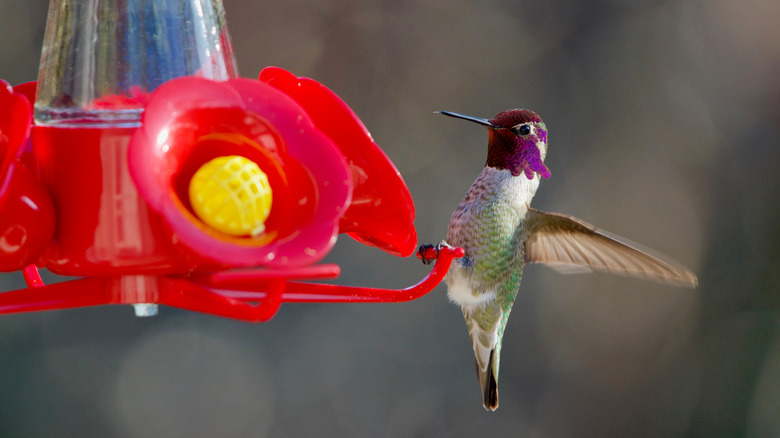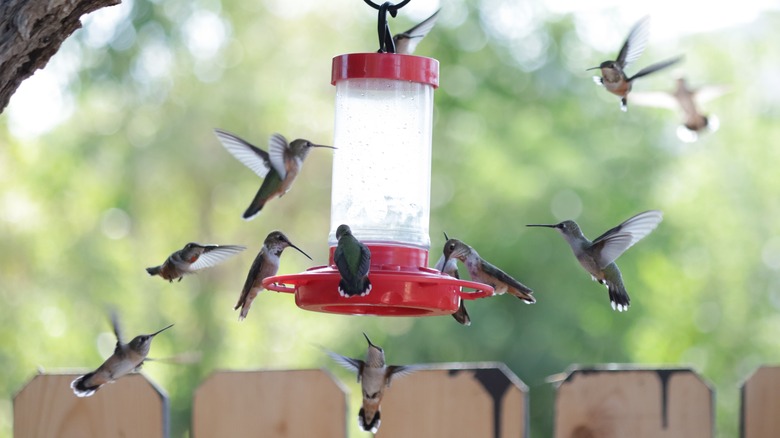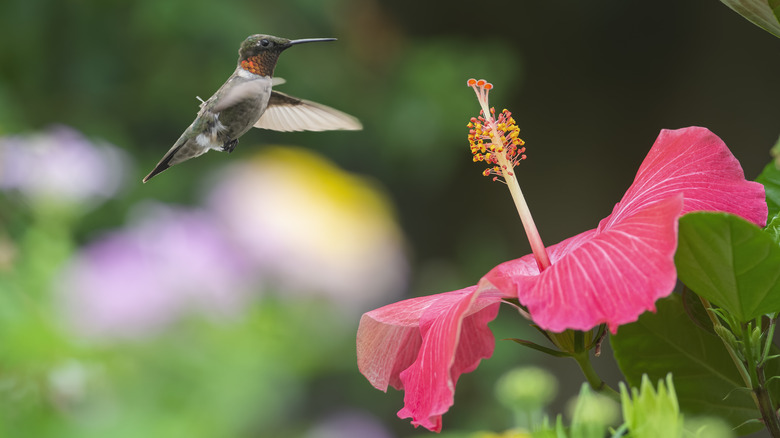The Absolute Best Time To Put Out Your Hummingbird Feeder
You don't have to be a hardcore birder to enjoy and appreciate the diminutive hummingbird. In fact, millions of people across North America are so fascinated by them that they routinely place various hummingbird feeders around their yards. Since the introduction of the first commercially available hummingbird feeder in 1950, seemingly everyone with a backyard has clamored to buy one — or more. Today, bird feeders, food, baths, and other accessories account for around $1 billion in sales annually in the United States alone.
Hummingbird feeders make up a large portion of that market, as the appeal of watching these tiny birds flit around the feeders is widespread. However, just having a feeder and sticking it in your yard won't guarantee you will have hummingbirds flocking to it. In order to ensure your feeder properly serves its purpose of drawing in hummingbirds, timing is key. So, when is the absolute best time to put out your hummingbird feeder?
Location dictates when to put out your hummingbird feeder
When you should put out your hummingbird feeder is determined by where you live. If you reside along the Gulf Coast, in the American Southwest or West Coast, you may want to leave a feeder up year around, as there are some species of hummingbirds that permanently live in those regions. However, in most parts of North America, hummingbirds are only present during portions of the year. This is because like many avian species, several hummingbird species migrate throughout the year. Many hummingbirds will spend the winter in Mexico or Central America before returning to points further north during spring.
As the spring migration begins, areas of the Southern U.S. will see an influx of hummingbirds sometime around mid-February. So, even those who live in regions with a year-round hummingbird population will see a dramatic increase in the number of birds during this time. As a result, it's a good idea to increase the number of feeders during late winter and early spring. The birds will begin making their way further north over subsequent weeks, with Americans living in the Midwest and Northeast generally seeing hummingbirds arrive around mid-April. The birds will make their way into Canada shortly thereafter. Hummingbird Central maintains an interactive migration map for various species which can help you pinpoint the arrival of hummingbirds each spring.
Other ways to attract hummingbirds to your yard
While most people undoubtedly put feeders out to give them an opportunity to see more hummingbirds, the feeders can actually be a valuable asset to the birds during their migration. Although the birds attempt to time their migration with the seasonal blooming of flowers, at times they may be a bit ahead of the blooms. There may be times when the number of birds exceeds the amount of available natural nectar in an area. In these instances, feeders can be a valuable source of nectar for hummingbirds.
With that in mind, there are a few other things you can do to attract hummingbirds to your yard. For one, hummingbirds avoid noisy yards, so try and limit any loud sounds. There are also a number of plants that attract hummingbirds which can be added to your garden. Additionally, planting a crape myrtle tree or adding a water feature will have hummingbirds flocking to your yard.


